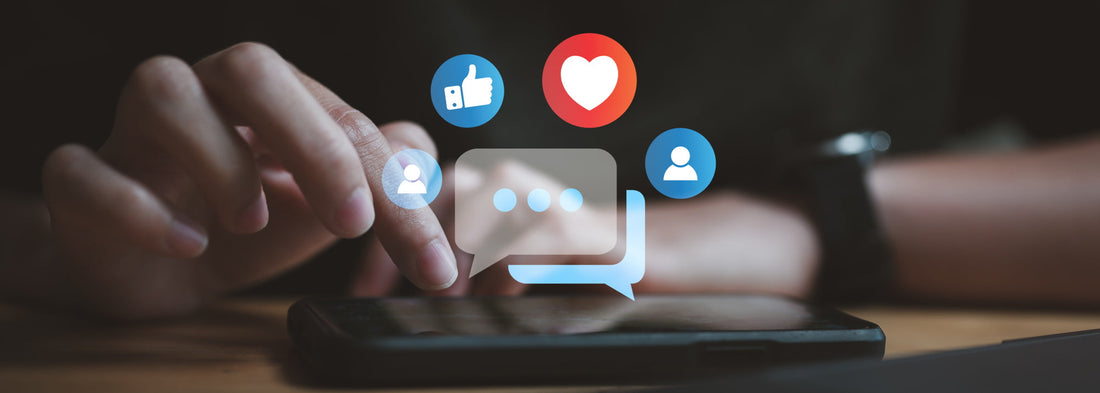
DATA PROTECTION ON SOCIAL MEDIA: HOW TO AVOID IDENTITY THEFT
Share
 Using social networks like Instagram, TikTok, Facebook or LinkedIn is part of everyday life for many people. We post vacation photos, share our opinions or stay in touch with friends. But with convenience also comes risk: protecting your personal data on social networks is a sensitive issue.
Using social networks like Instagram, TikTok, Facebook or LinkedIn is part of everyday life for many people. We post vacation photos, share our opinions or stay in touch with friends. But with convenience also comes risk: protecting your personal data on social networks is a sensitive issue.
Cybercriminals exploit security vulnerabilities to steal data or misuse identities. This article shows you how to protect your data, maintain your privacy, and effectively safeguard yourself against identity theft.
Why data protection on social media is so important
Social networks are data-hungry. They store personal information, interests, contacts, locations, and much more. This data is often used for targeted advertising, but also for criminal purposes. It becomes particularly dangerous when third parties steal your identity and carry out fraudulent activities in your name.
Identity theft is not a marginal phenomenon. According to the German Federal Office for Information Security (BSI), cases of social engineering attacks and identity misuse are continuously increasing. Victims suddenly face collection letters, fake profiles, or financial damage.
Tips for better data protection on social networks
To effectively protect your data on social media, you should follow these proven privacy tips:
- Use strong passwords: Use a unique, strong password for each social network. Ideally, combine numbers, special characters, and both uppercase and lowercase letters. Password managers can help you manage them. Regularly changing your password is not necessary—as long as you are sure that no one else knows it.
- Enable two-factor authentication: Many platforms offer the option to protect your account with a second layer of security. Even if the password is compromised, access remains blocked.
- Limit profile information: Only provide the most necessary information. Avoid publicly sharing your place of residence, employer, or phone number. Be mindful that your location can often be identified from photos.
- Use privacy settings: Adjust the visibility of your content. Consider whether everyone really needs to see your posts, friend lists, or profile pictures.
- Don’t accept friend requests from strangers: Fake profiles are often created to access your data. Be critical of new requests.
- Watch out for suspicious messages: Phishing is a common method for stealing login credentials. Don’t open dubious links (or avoid clicking links in emails entirely) and report suspicious content.
- Keep software up to date: Outdated apps and browsers may contain security vulnerabilities. Perform updates regularly.
- Block social plugins: Facebook or X buttons on websites often collect data unnoticed. Use add-ons like uBlock Origin or NoScript.
How to effectively protect yourself against identity theft
Identity theft can have serious consequences. The following measures can help you minimize your risk:
- Do not publish sensitive documents such as ID copies or contracts. Even providing ID for verification when buying second-hand goods is not a good idea, as the recipient could misuse the photo in the same way.
- Use monitoring tools like the Identity Leak Checker from the Hasso Plattner Institute to check if your data has appeared in leaks.
- Enable login notifications if the network offers this feature.
- Be cautious with app permissions: Many third-party apps request extensive access to your profile.
What to do if you fall victim to identity theft
If you suspect your identity has been misused, act quickly:
- Immediately change all passwords for affected accounts.
- Inform the respective platform and have fraudulent profiles blocked.
- File a report with the police.
- Check your credit report to detect unauthorized loans.
- Document all steps and secure evidence (screenshots, emails, etc.).
Frequently asked questions about data protection on social networks
How secure is my data on social media platforms like TikTok and Instagram?
Platforms like TikTok or Instagram promise data protection but are regularly criticized for data leaks or unclear data sharing practices. Your data may be processed worldwide and used for advertising purposes. You have limited control over what happens to your information. Therefore, use all privacy settings (and adjust them regularly, as options often change) and disclose as little as possible.
How can I protect myself against identity theft?
Avoid disclosing sensitive data, use strong passwords and two-factor authentication, and regularly check your online identity with security services. Vigilance and technical protection are the best defense.
What can criminals do with my data?
With stolen data, criminals can create fake profiles, apply for loans, make online purchases, damage your reputation, or gain access to other accounts. Even a few pieces of information are enough for social engineering.
How do I report identity theft?
Contact the affected platforms (e.g., Instagram, Meta, TikTok) through their support pages. Simultaneously file a police report and, if necessary, inform your bank and credit card providers. In severe cases, notifying the data protection authority may also be appropriate.
Conclusion: Data protection requires attention and action
Social networks offer many benefits, but they also pose risks to your privacy. With conscious behavior, technical safeguards, and increased awareness of data protection, you can regain control of your data and effectively prevent identity theft.
Stay informed about new threats and security solutions—because data protection is not a fixed state, but an ongoing process.
